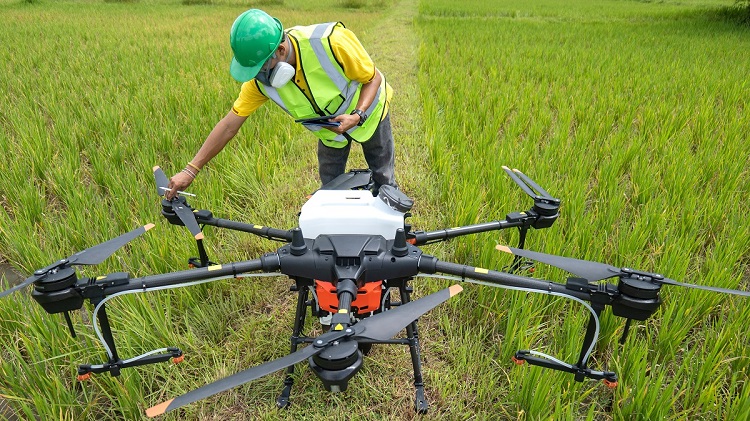Modern farming techniques have revolutionized agriculture, making it more efficient and productive than ever before. From advanced machinery and automation to precision agriculture and improved crop varieties, these techniques are helping farmers to produce more food with fewer resources. This is essential for meeting the growing demand for food around the world.
In this article, we will explore how modern farming techniques are boosting agricultural efficiency. We will also look at some of the challenges that farmers face in adopting these techniques. So, keep on reading!
Table of Contents
Precision Agriculture
Precision agriculture is like giving your crops a personalized health plan. It uses cool tech like GPS, sensors, and data analysis to monitor everything from soil moisture to plant health.
Sensors in the field collect data on things like temperature, humidity, and nutrient levels. This info gets beamed up to a computer, where it’s crunched to create a detailed map of the field. Farmers can then use maps to make super-smart decisions. They can see exactly where crops need more water or fertilizer and where pests might be lurking. This means they can apply resources exactly where they’re needed, cutting down on waste and boosting yields.
It’s all about working smarter, not harder. Precision agriculture is helping farmers around the world grow more food with less impact on the environment.
Aftermarket Tools for Machine Enhancement
Upgrading farm machinery with aftermarket tools is another game changer in modern agriculture. The enhancement tools allow older equipment to meet new challenges efficiently. For instance, adding aftermarket hydraulic cylinders enhances the power and precision of machinery operations. This can lead to better plowing and harvesting, which in turn ensures that the crops are handled gently and effectively, reducing waste and increasing yield.
Moreover, these upgrades can bring older machines up to current technological standards, incorporating them into precision agriculture systems. This integration allows for a smoother transition to high-tech farming, enabling more farmers to adopt advanced techniques without overhauling their entire fleet of equipment.
Improved Irrigation Systems
Modern farming has really stepped up its game with improved irrigation systems, making water use way more efficient. Today’s irrigation techniques go beyond just sprinkling water across a field. They’re about delivering the right amount of water exactly where and when the crops need it.
Take drip irrigation, for example. It targets the water directly to the roots of the plants, minimizing waste and evaporation. This method conserves water and ensures that crops get the optimal moisture they require to thrive. Plus, farmers can integrate these systems with timers and sensors to automate the process, making it even more efficient.
These advancements in irrigation are a big win for agriculture. They help farmers produce more food using less water, which is crucial as water resources become scarcer. With these smart systems, farming is not only more productive but also more sustainable.
Data-Driven Decision Making
This approach involves collecting extensive data from various sources like satellite imagery, soil sensors, and weather stations. This information is then analyzed to understand patterns and predict outcomes. For example, data analytics can forecast weather conditions, predict pest invasions, and optimize planting and harvesting schedules.
With this kind of insight, farmers can precisely allocate resources such as water, fertilizers, and pesticides, ensuring they are used optimally to increase yield while reducing waste. It also helps in making strategic decisions about crop rotation and land use to maintain soil health and productivity over time.
Keep in Mind When Applying Modern Farming Techniques
When applying modern techniques to farming, several key considerations should be kept in mind to ensure successful adoption and optimal results:
- Cost-Benefit Analysis: Before investing in new technologies, it’s crucial to evaluate the potential returns. Consider both the initial costs and the long-term benefits, such as increased yield, reduced labor, and lower resource usage.
- Training and Education: Farmers must have access to training to use new technologies This includes understanding how to operate advanced machinery, utilize data from precision agriculture tools, and apply genetic modifications properly.
- Infrastructure Requirements: Modern farming techniques often rely on specific infrastructure, such as reliable internet access for cloud-based data analytics or appropriate storage facilities for genetically modified seeds. Ensuring these infrastructures are in place is critical.
- Environmental Impact: It’s important to assess the environmental consequences of new farming methods. This includes the potential effects on soil health, water resources, and biodiversity. Sustainable practices should be prioritized to maintain ecological balance.
- Regulatory Compliance: Be aware of the local and international regulations that govern the use of genetically modified crops, chemical usage, and data security in agriculture. Compliance is crucial to avoid legal issues and ensure market access.
- Local Adaptation: Consider local conditions and adapt technologies accordingly. What works in one region may not work in another due to differences in climate, soil types, and crop preferences.
Wrapping Up
It’s clear that the future of farming is here, transforming what was once done with simple tools into a high-tech industry powered by data, genetics, and precision. So, while it may not be your grandpa’s tractor anymore, it’s definitely a promising new era for farmers everywhere.

